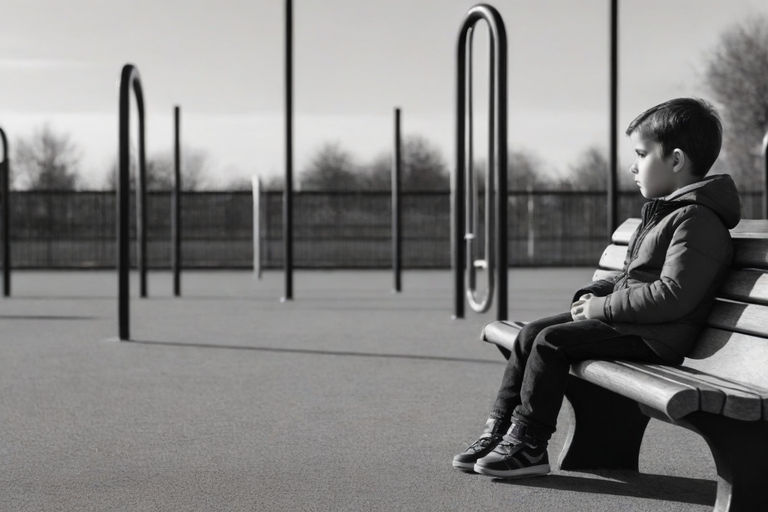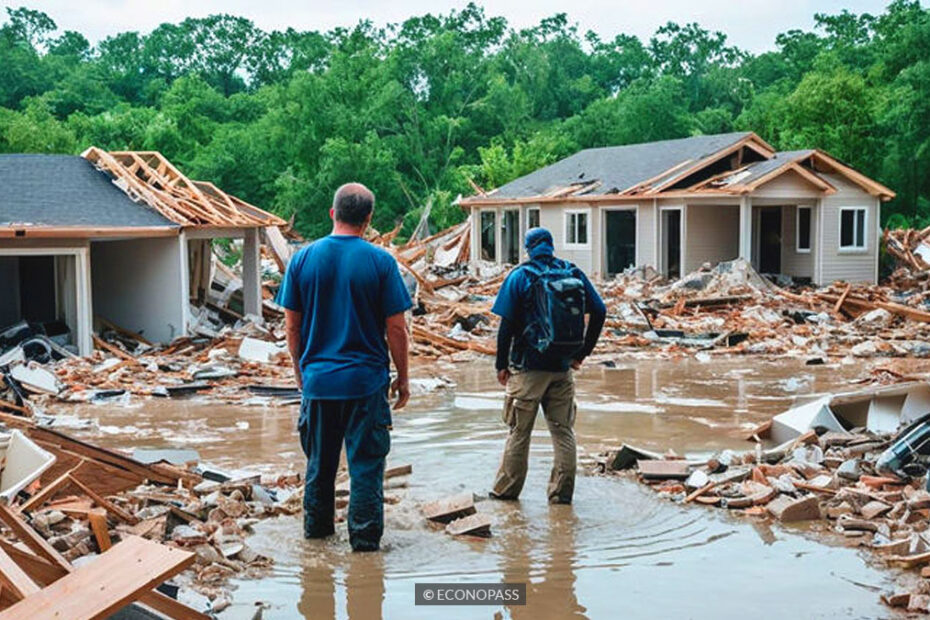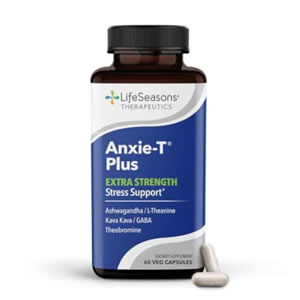Table of Contents
Life’s journey is not always a smooth path – it’s often paved with obstacles, hardships, and even traumatic experiences that can leave us feeling shaken, vulnerable, and overwhelmed. Trauma, whether it stems from abuse, natural disasters, accidents, or other life-altering events, can cast a long shadow, impacting our mental health, relationships, and overall well-being.
Yet, even in the face of adversity, there is hope. Just as a seed must break through the soil’s surface to grow, we too possess an innate resilience that can help us embrace our strength and navigate the path to healing and personal growth.
Understanding Trauma and Its Impact
Trauma is a deeply distressing experience that overwhelms our ability to cope. It can manifest in various forms, including:
- Physical Trauma: Resulting from accidents, injuries, or violence.
- Emotional Trauma: Caused by abuse, neglect, or traumatic events.
- Vicarious Trauma: Experienced by witnessing or learning about traumatic events.
The impact of trauma can be profound, affecting our mental, emotional, and physical well-being. Common reactions may include:
- Anxiety, depression, or PTSD symptoms
- Difficulty sleeping or concentrating
- Emotional numbness or detachment
- Feelings of guilt, shame, or self-blame
It’s important to remember that these reactions are normal and a testament to the resilience of the human spirit.
Types of Trauma and Their Effects
Trauma can manifest in various forms, each with its own unique challenges and effects. Some common types include:
Childhood Trauma
Abuse, neglect, or household dysfunction during childhood can have long-lasting impacts on mental health, relationships, and overall well-being. Survivors may struggle with attachment issues, low self-esteem, and difficulty regulating emotions.

Childhood trauma can manifest in various forms, including physical, emotional, or sexual abuse, as well as emotional or physical neglect. It can also result from witnessing domestic violence, having a parent with a mental illness or substance abuse issue, or experiencing the loss of a parent or caregiver.
The effects of childhood trauma are often complex and far-reaching, as it occurs during critical stages of development. Survivors may experience difficulties with trust, intimacy, and forming healthy relationships, as well as increased risks of depression, anxiety, and addiction. However, with appropriate support and treatment, such as trauma-focused cognitive-behavioral therapy or EMDR, it is possible to heal and develop healthy coping mechanisms.
Interpersonal Trauma
This includes physical, sexual, or emotional abuse by a partner, family member, or acquaintance. It can result in feelings of betrayal, mistrust, and difficulties in interpersonal relationships.

Interpersonal trauma, also known as relational trauma, can be particularly damaging as it involves a violation of trust and safety within a close relationship. Intimate partner violence, domestic abuse, sexual assault, and emotional abuse can all fall under this category. Survivors may struggle with low self-worth, fear of future intimacy, and difficulties in establishing and maintaining healthy boundaries.
Seeking support through counseling, support groups, or organizations that specialize in interpersonal trauma can be incredibly helpful in the healing process. Learning about the cycle of abuse, developing assertiveness skills, and building a strong support system can empower survivors to break free from abusive patterns and reclaim their lives.
Combat or War Trauma
Exposure to the horrors of combat, violence, and war can leave deep psychological scars that linger long after the fighting has ended. For many veterans and survivors, the trauma they experienced on the battlefield or in war-torn regions can manifest in various mental health challenges, chief among them being post-traumatic stress disorder (PTSD).
The symptoms of PTSD stemming from combat or war trauma are often debilitating and can disrupt nearly every aspect of a survivor’s life. Intrusive thoughts, nightmares, and flashbacks can transport them back to the heart-wrenching events they witnessed or endured, triggering intense emotional and physical reactions. Hypervigilance, or being constantly on guard, is another common symptom, as the mind and body remain in a perpetual state of heightened alertness, even in safe environments.

Emotional numbing, a coping mechanism developed to survive the atrocities of war, can also persist long after returning home. This can make it difficult for survivors to experience positive emotions or maintain meaningful connections with loved ones. Anger, irritability, and a heightened startle response are other potential symptoms that can strain personal relationships and hamper reintegration into civilian life.
Moreover, many veterans and survivors struggle with feelings of guilt, shame, or moral injury stemming from the actions they were forced to take or the horrors they witnessed during combat. This can lead to self-destructive behaviors, substance abuse, and an increased risk of suicide.
Healing from combat or war trauma is a complex and deeply personal journey that often requires a multifaceted approach. Professional help from therapists specializing in trauma-focused therapies, such as cognitive processing therapy (CPT) or prolonged exposure therapy (PE), can be invaluable in processing the traumatic experiences and developing coping strategies.
Support from peers who have undergone similar experiences can also play a crucial role in the healing process. Veteran support groups and organizations provide a safe space for survivors to share their stories, validate their experiences, and access resources tailored to their unique needs.
Additionally, mindfulness practices, such as meditation and yoga, can help survivors manage symptoms of PTSD, reduce stress and anxiety, and cultivate a greater sense of present-moment awareness. Engaging in hobbies, creative outlets, and physical activities can also aid in the healing process by promoting relaxation, self-expression, and a sense of accomplishment.
While the road to recovery from combat or war trauma is often arduous, it is crucial for survivors to remember that healing is possible. With the right support systems, therapeutic interventions, and personal determination, they can reclaim their sense of safety, emotional well-being, and purpose in life.
Natural Disaster or Accident Trauma
Traumatic events like natural disasters, accidents, or life-threatening illnesses can leave survivors feeling vulnerable, anxious, and struggling with a loss of control.
Natural disasters, such as earthquakes, hurricanes, or wildfires, can be extremely traumatic, especially when they result in the loss of loved ones, homes, or communities. Similarly, accidents like car crashes or near-death experiences can leave individuals with a profound sense of vulnerability and a loss of control.

Survivors may experience intrusive thoughts, flashbacks, or nightmares related to the event, as well as feelings of helplessness or guilt. In the aftermath of such events, it’s crucial to seek support from mental health professionals, join support groups, or engage in trauma-focused therapies like EMDR. Additionally, developing stress management techniques, such as mindfulness practices or grounding exercises, can help individuals cope with the emotional and psychological impacts of these traumatic experiences.
Recognizing the specific type of trauma and its potential effects can help survivors seek appropriate support and coping strategies.
The Path to Healing
Healing from trauma is a journey, and everyone’s path may look different. However, there are strategies that can help navigate the road to recovery:
- Seek Professional Support: Counseling, therapy, or support groups can provide valuable guidance and coping mechanisms.
- Practice Self-Care: Self-Care and Engage in activities that promote relaxation, mindfulness, and overall well-being, such as exercise, meditation, or creative pursuits.
- Develop a Support System: Surround yourself with a network of supportive individuals who can offer understanding and encouragement.
- Embrace Healthy Coping Mechanisms: Find healthy outlets for processing emotions, such as journaling, art therapy, or spending time in nature.
- Be Patient and Compassionate: Healing takes time, and setbacks are a normal part of the process. Treat yourself with kindness and compassion.
- Explore Trauma-Focused Therapies: Evidence-based treatments like Cognitive Processing Therapy (CPT), Prolonged Exposure Therapy (PE), and Eye Movement Desensitization and Reprocessing (EMDR) can be highly effective in addressing traumatic memories and their impacts.
- Embrace Post-Traumatic Growth: While trauma can be challenging, it can also provide opportunities for personal growth, such as developing a greater appreciation for life, forming stronger relationships, or finding new paths and purpose.
- Engage in Mindfulness Practices: Mindfulness techniques like meditation, deep breathing exercises, and grounding techniques can help manage overwhelming emotions, reduce stress, and cultivate present-moment awareness.
- Seek Peer Support: Connecting with others who have experienced similar traumas can provide a sense of validation, understanding, and shared wisdom, reducing feelings of isolation and shame.
- Celebrate Small Victories: Healing is a non-linear process with ups and downs. Celebrating small victories, such as getting through a difficult day or trying a new coping strategy, can help maintain motivation and hope.
Remember, healing is not about erasing the past but about learning to integrate traumatic experiences in a way that allows you to move forward with strength and resilience. Throughout this journey, it’s crucial to remember that you are not alone, and seeking help is a sign of strength, not weakness.
In a world where trauma and adversity may be unavoidable, it is our resilience and perseverance that carry us forward. Will you embrace your strength and embark on the journey of healing and personal growth?
Common Questions About Trauma and the Path to Recovery
What is trauma?
Trauma refers to a deeply distressing or disturbing experience that overwhelms an individual’s ability to cope, causing lasting psychological and emotional impact.
What are some common causes of trauma?
Trauma can stem from various sources, including abuse (physical, emotional, or sexual), natural disasters, accidents, violence, combat experiences, or other life-altering events.
What are the potential effects of trauma?
The effects of trauma can be far-reaching, impacting mental health, relationships, and overall well-being. Common effects include PTSD, anxiety, depression, emotional numbing, and difficulties in daily functioning.
Why is it important to heal from trauma?
Unresolved trauma can have long-lasting negative consequences, hindering personal growth, emotional well-being, and the ability to form and maintain healthy relationships. Healing from trauma is crucial for reclaiming a sense of safety, empowerment, and purpose.
What are some practical strategies for healing from trauma?
Practical strategies for healing from trauma may include seeking professional therapy (e.g., trauma-focused cognitive behavioral therapy, EMDR), joining support groups, practicing mindfulness and self-care, engaging in creative outlets or hobbies, and building a strong support system.
Is it possible to grow and thrive after trauma?
Yes, it is possible to not only heal from trauma but also to experience personal growth and develop resilience through the process. With the right support and strategies, individuals can embrace their strength and navigate a path towards post-traumatic growth.
Where can individuals find support and resources for trauma healing?
Support and resources are available through mental health professionals, trauma-focused organizations, support groups, online communities, and reputable self-help resources. It’s important to seek out trustworthy and reliable sources of support.
Was this Article Helpful?
We hope that you found this article helpful and informative. We are always striving to provide you with the best content and resources to recover from a trauma. We would love to hear from you and get your feedback and suggestions.
Please visit our Facebook page and leave us a comment or a message. Tell us what you liked or disliked about this article, what you learned or want to learn more about, and what you want us to write about next.
Your input is very valuable to us and helps us improve our work. Thank you for reading and supporting us.
#trauma #resilience #healing #mentalhealthawareness #overcomingadversity #personalgrowth #traumarecovery #mentalwellbeing #copingstrategies #posttraumaticgrowth












